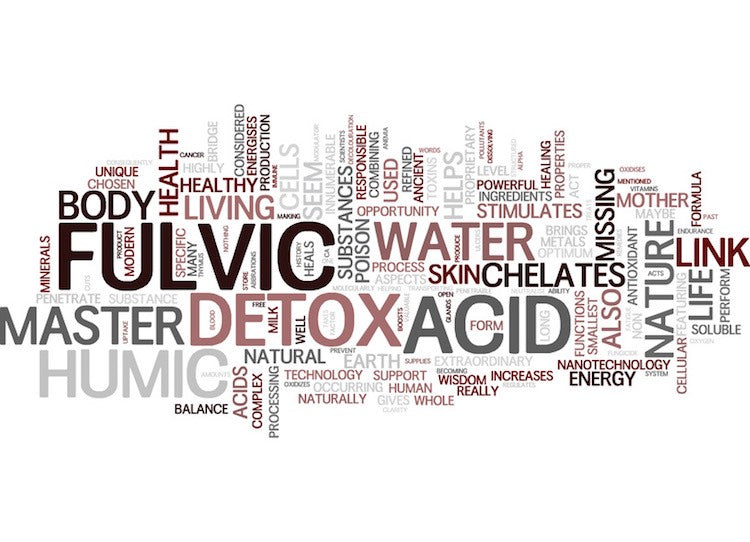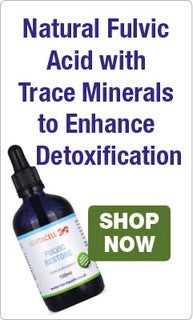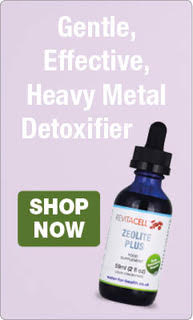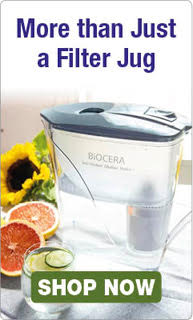News that the market for fulvic acid is growing rapidly is no surprise.
Like many others in the natural health field, we are fully aware of fulvic acid’s transformative power and have been stocking the supplement under our own label for a number of years.
Composed of organic compounds harvested from the earth’s crust, fulvic acid is associated with a raft of benefits including nutrient absorption, pH balance, heavy metal chelation and improved cellular function.
If you’re keen to learn more about this so-called miracle molecule, read on.
What Exactly is Fulvic Acid?
Fulvic acid is a component of humic acid – a soluble organic compound located in the crust of the earth, as well as in ancient plant material and bodies of water.
A naturally-occurring byproduct of the millions of microbes resident in decomposing plant deposits, fulvic is only available from these scattered biomasses pocketed throughout the globe.
Aside from perhaps oxygen and water, no substance is more integral to life on Earth than humic acid, of which fulvic is the most oxygen-rich.
Known for its ability to ferry important mineral nutrients into the cells of a plant, fulvic acid is a valuable horticultural tool throughout the world.
As far as plants are concerned, it has also been shown to enhance seed germination, promote respiration and increase resistance to drought.
Of course, you are probably less curious about fulvic’s role in agricultural processes and more interested in how it can help humans.
What is Fulvic Acid Used For?
Since fulvic acid is a plentiful source of essential minerals (typically 70+), amino acids, electrolytes, phytochemicals and antioxidants, its usage as a natural health aid is understandable.
The specific pharmacological benefits of the compound known as “Shilajit” in ancient Ayurvedic medicine have been highlighted in thousands of clinical studies published over the years, particularly in China.
However, it could also be argued that science is only beginning to fully comprehend just how many uses to which it can be put.
Science, of course, is not the only means of quantifying the effectiveness of a natural compound. Inhabitants of remote regions of China, Nepal and Pakistan have relied upon Shilajit for centuries, typically for immune and digestive complaints.
A snapshot of fulvic acid’s benefits are given below:
• Stimulates blood formation and energy production
• Transports nutrients into living cells
• Has preventative and curative virus-fighting properties
• Stimulates the immune system
• Assists with enzyme production
• Acts as a free radical scavenger
• Improves cellular processes
• Supports muscle function
• Chelates to heavy metals and detoxifies pollutants
• Has potential to protect against cognitive impairment
• Act as an anti-stress agent
• Boosts energy levels
• Helps restore optimal pH level
• Decreases acid-pepsin secretion for better gut health
While it's true that more evidence is needed to properly evaluate fulvic acid and its role in positively enhancing human health, the same can be said for a great many pharmacological compounds.
Certainly the combination of clinical studies and anecdotal evidence suggests fulvic acid’s efficacy in various applications.
Fulvic Acid Foods
Many people may logically wonder about the fulvic acid content of food. After all, if it originates from the soil...
The answer is that, yes, you can boost your fulvic acid content via diet. However, the only way of doing so is eating nutritious organic produce. The degradation and erosion of our soil due to agricultural processes means regular soil is no longer naturally enriched with appreciable humic acid.
The same industrial use of chemicals such as pesticides and herbicides has also drastically reduced the mineral content of soil. Evidence for this was laid bare in a study conducted by Donald Davis at the University of Texas at Austin’s Department of Chemistry and Biochemistry, published in December 2004.
By analysing Department of Agriculture data from both 1950 and 1999 for 43 different vegetables and fruits, Davis and his team uncovered “reliable declines” in the protein, calcium, phosphorus, iron, riboflavin (vitamin B2) and vitamin C content of produce over the preceding half-century.
Because of the diversity of soil, there is no reliable means of measuring the amount of fulvic acid in food; but eating a broad selection of organically-grown vegetables – preferably from local farmers – is surely the best way to go about it.
Fulvic Acid Drinks
Perhaps you have noticed Blk Water on the shelves of your local health food store. While it may resemble activated charcoal, in actual fact this bottled water brand contains spring water infused with fulvic minerals.
Fulvic acid-infused water – or Alkaline Fulvic Trace Mineral Infused Water, to use the full title – is marketed as an electrolyte-replenishing, pH-balancing drink for athletes. It has a pH of between 8 and 9, similar to the level achieved by our Biocera Alkaline Pitcher.
While some have claimed Blk Water is no better for you than regular H20, we feel it represents a rare opportunity to consume fulvic minerals – and this can only be a good thing.
Fulvic Restore: A Unique Fulvic Acid Supplement
As a nutritional supplement, fulvic acid generally comes in liquid form, resulting in better absorption. Our own ionic solution, Fulvic Restore, is a great choice if you’re looking to take advantage of fulvic’s properties.
There are several reasons for this. Number one, the product benefits from cutting-edge Fulvic Isolation Technology, which is used to extract humic substances from an ancient feedstock located in Canada.
This particular plant material is exceptionally high in both humic and fulvic acids but, importantly, low in the ash and heavy metals which are all too common with many feedstocks.
Another advantage of our fulvic is that it contains a comparatively high percentage of hydrophobic fulvic acid, understood to be the most bioavailable form. Per daily dose, the hydrophobic fulvic acid content is 3.7%.
Lastly, it is produced and packaged using food-grade manufacturing equipment in a GMP-compliant facility licensed by Health Canada.
Because of the difficulties in measuring the fulvic acid content of food, a fulvic acid supplement may be the most convenient means of increasing your daily intake. One 100ml bottle of Fulvic Restore gives a 50-day supply, by which time fulvic acid might well have become a staple of your natural health regime.




























Leave a comment